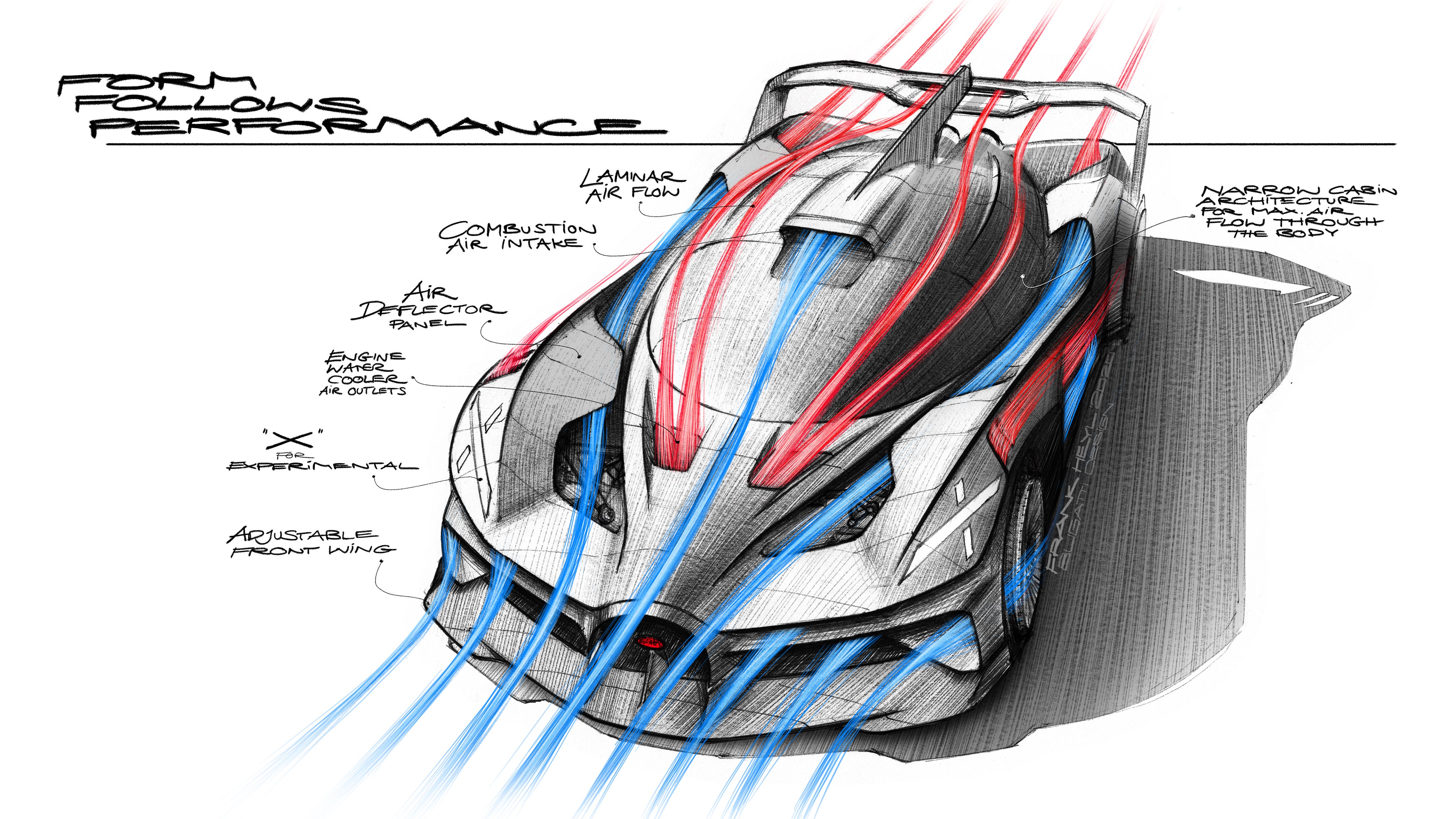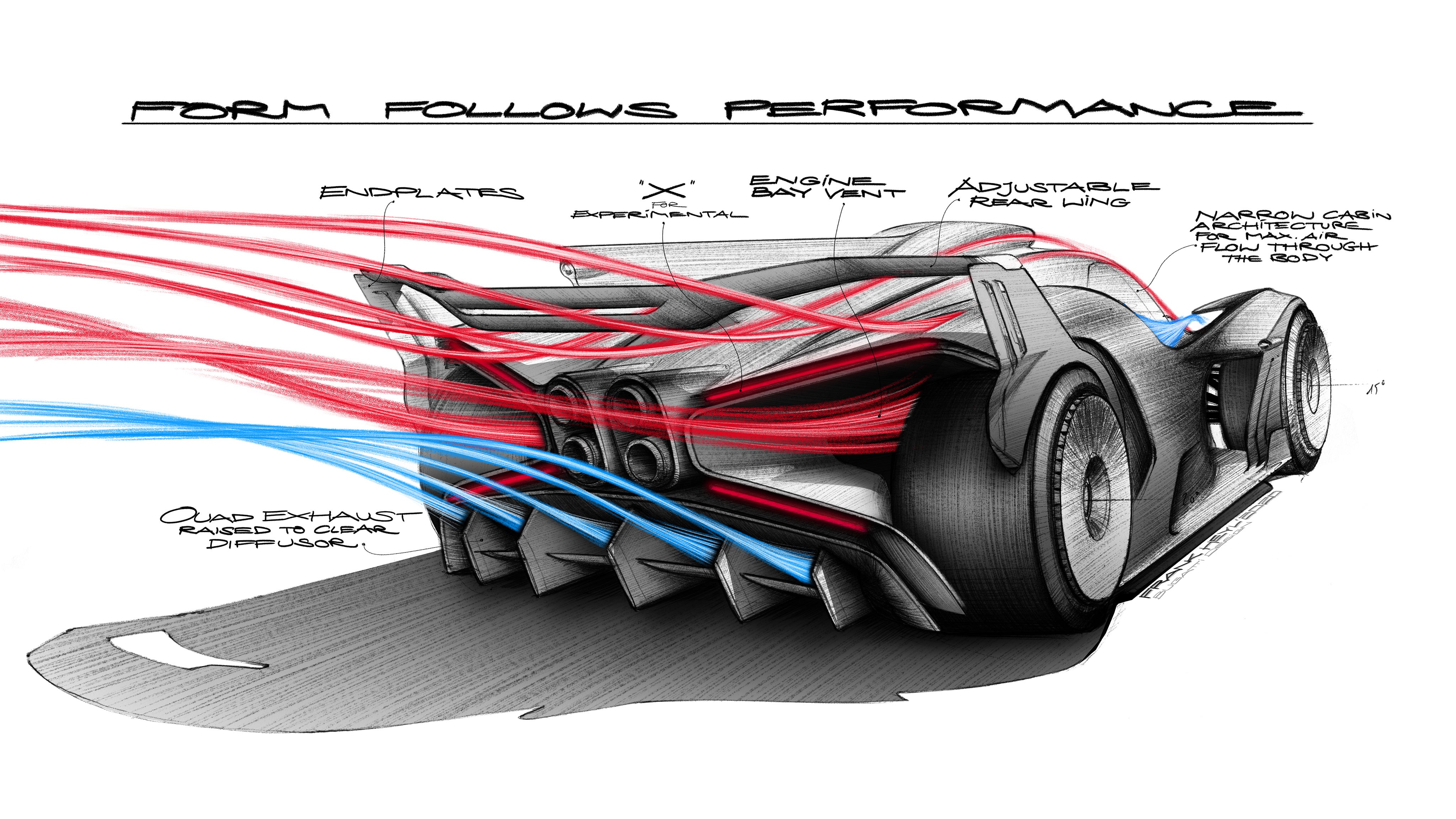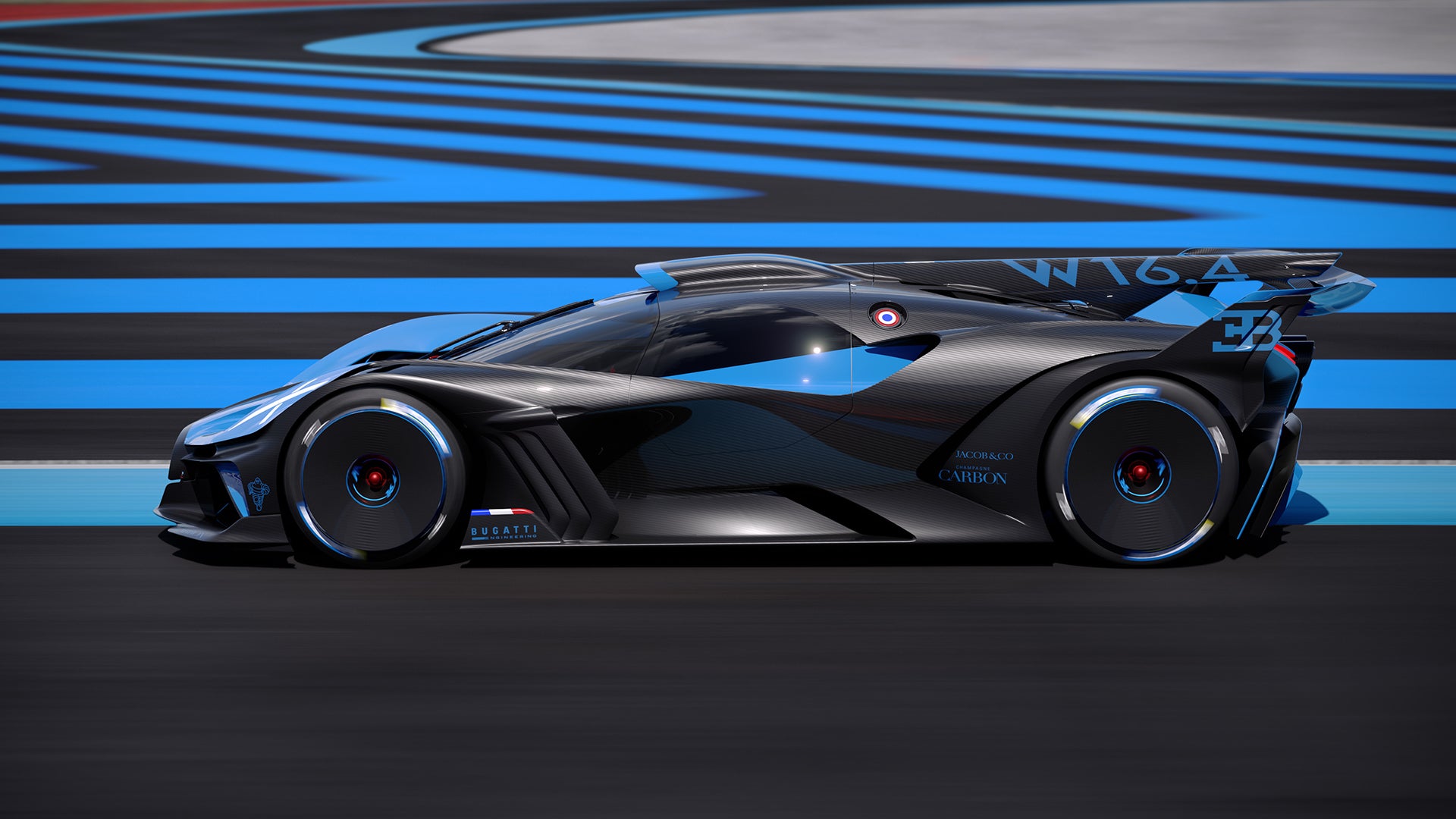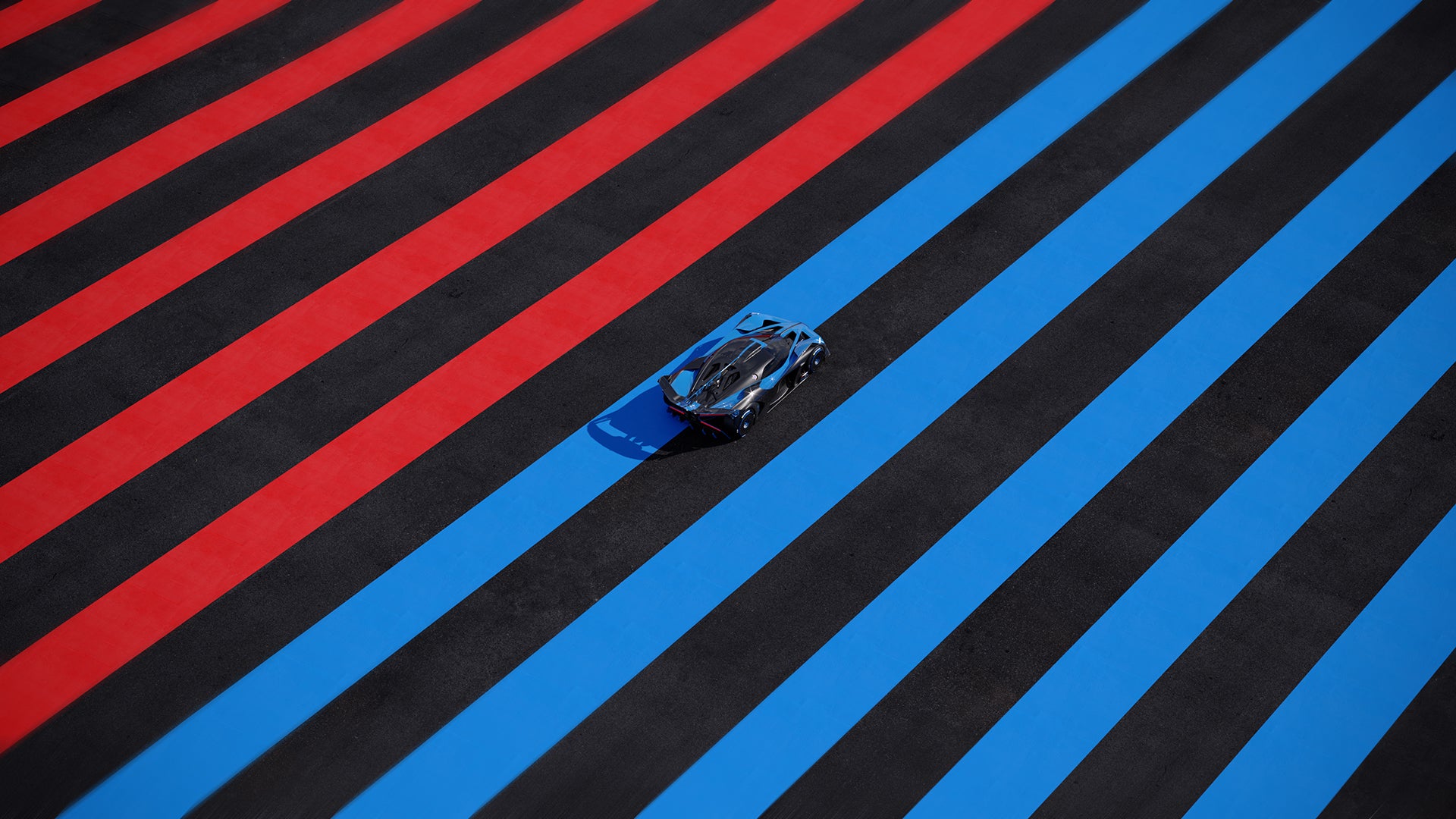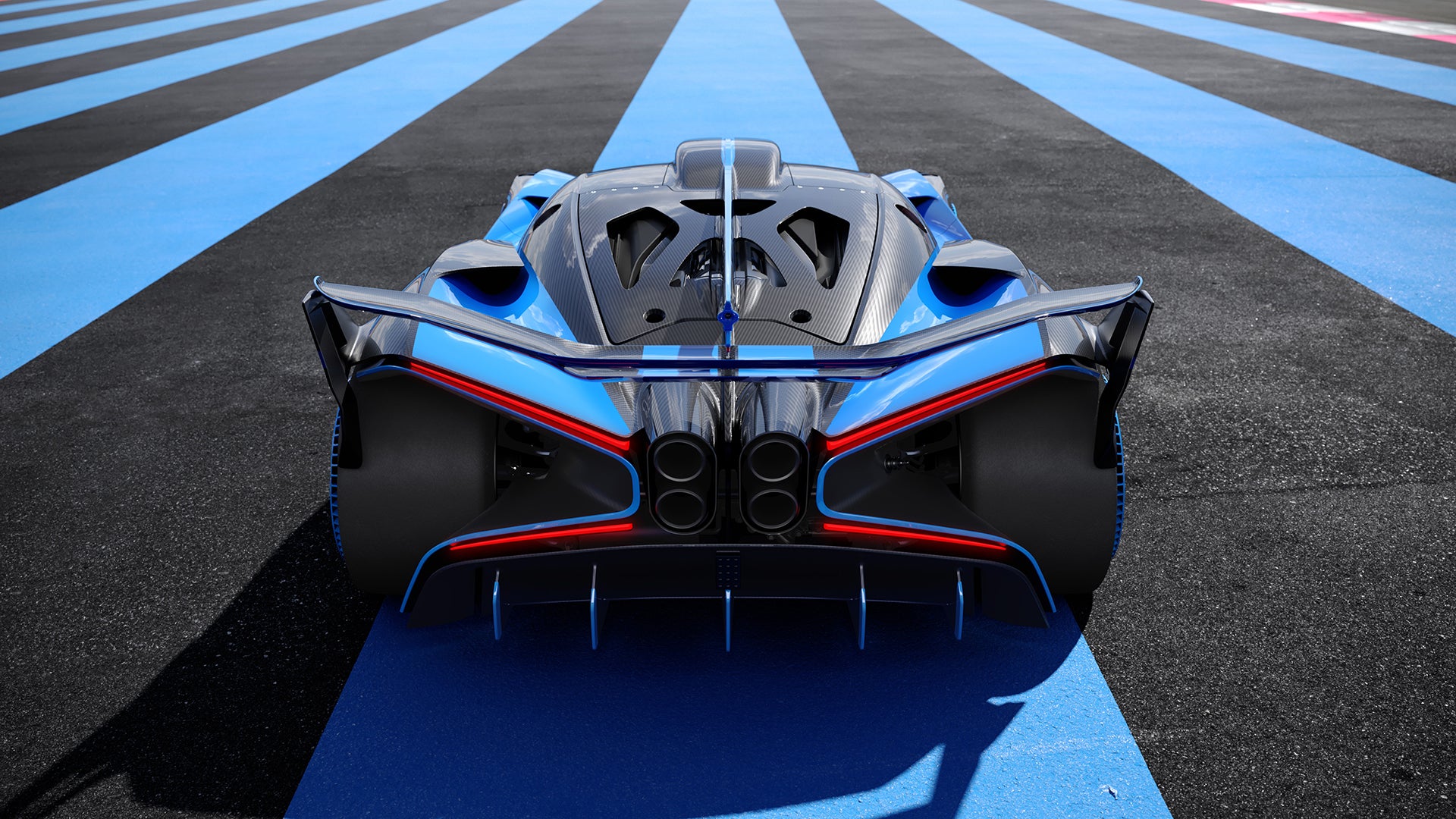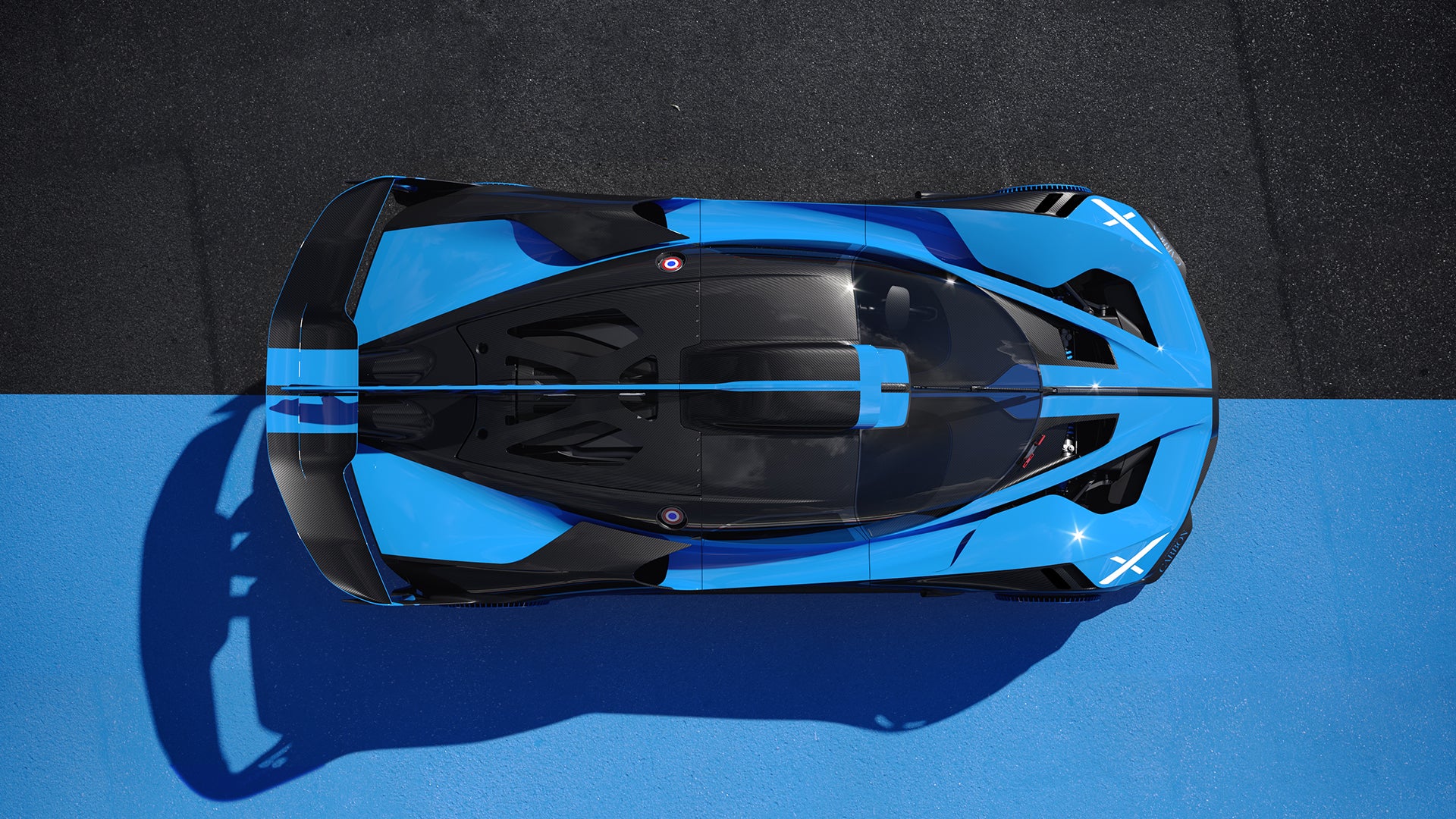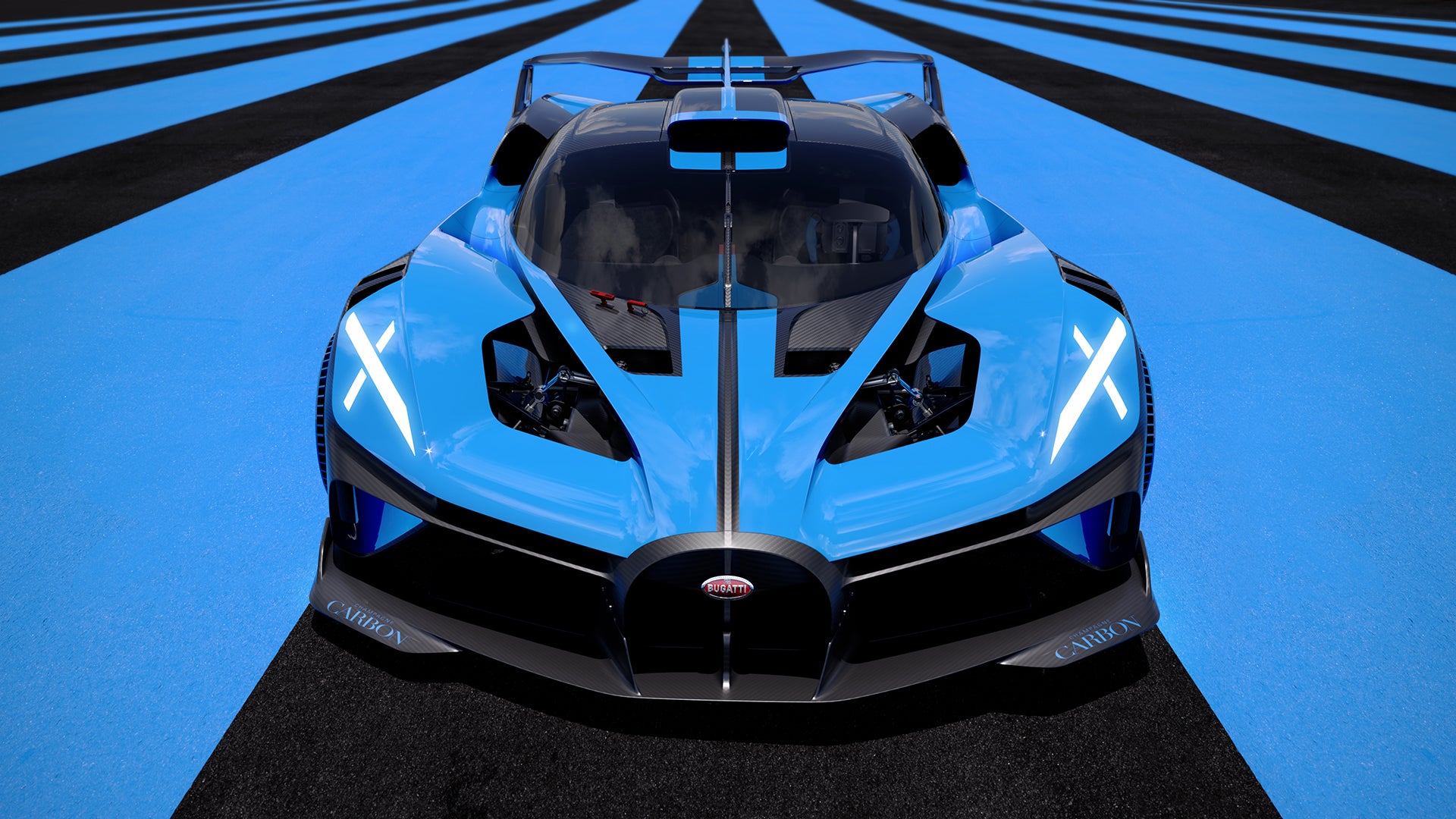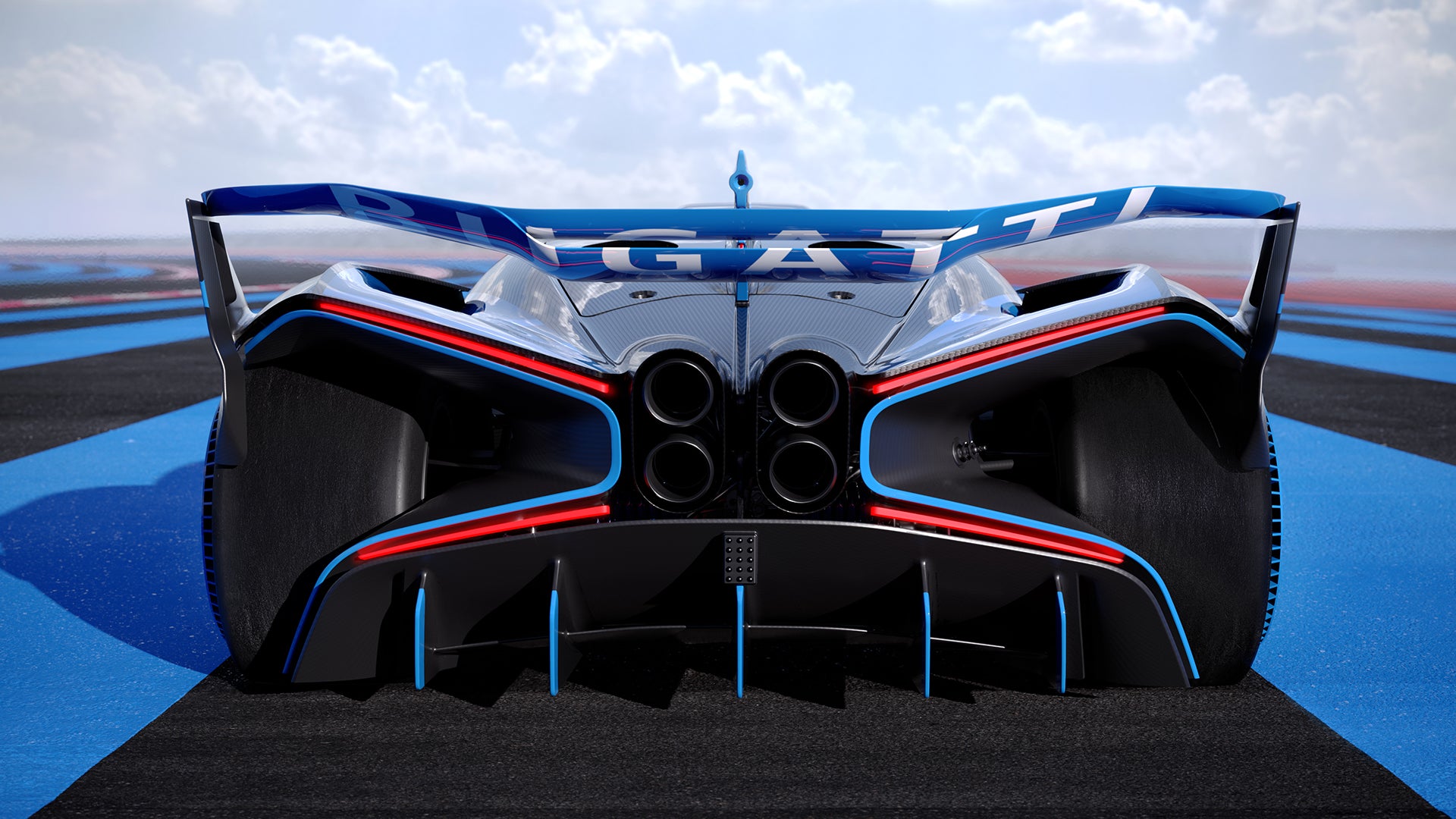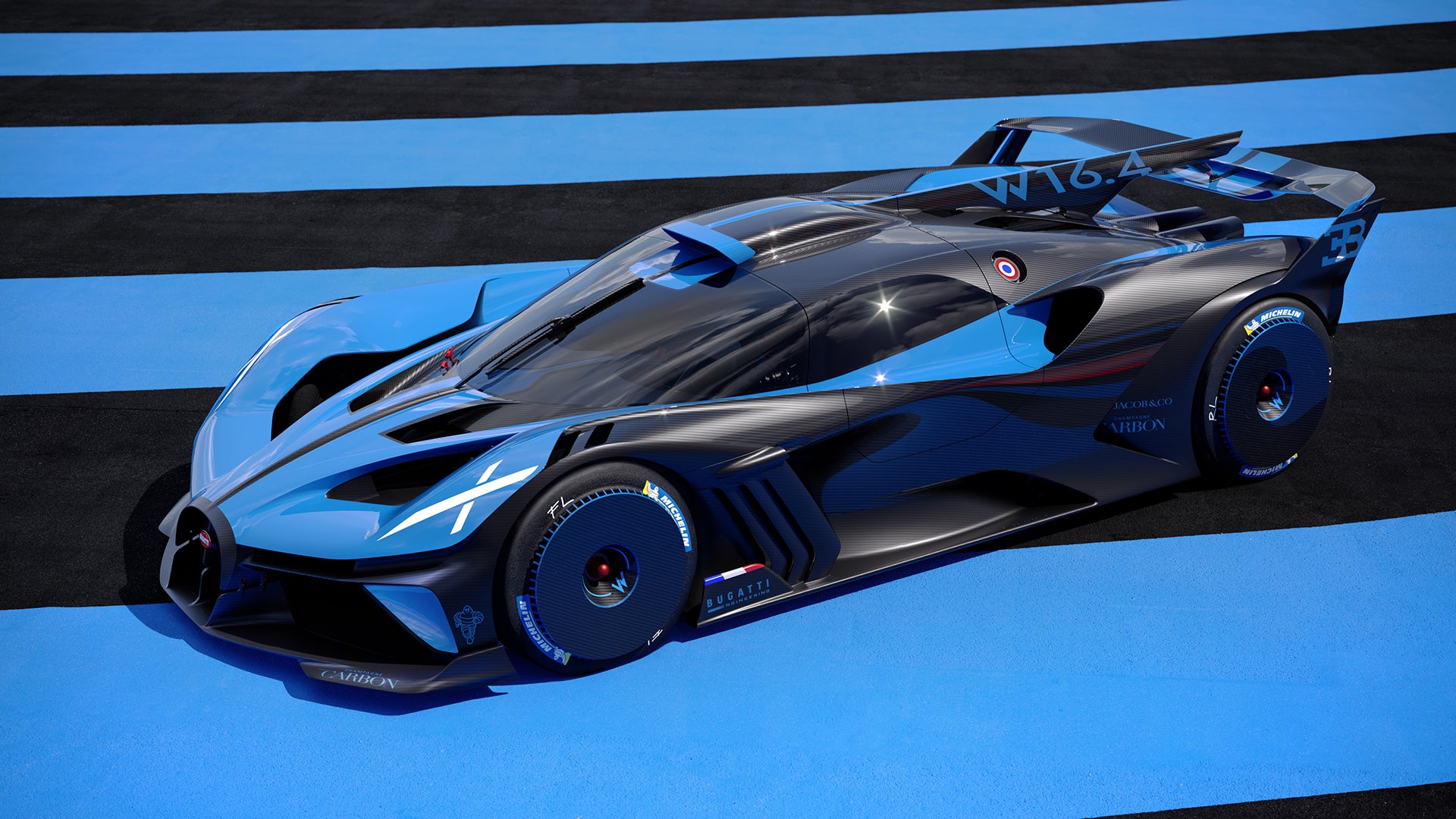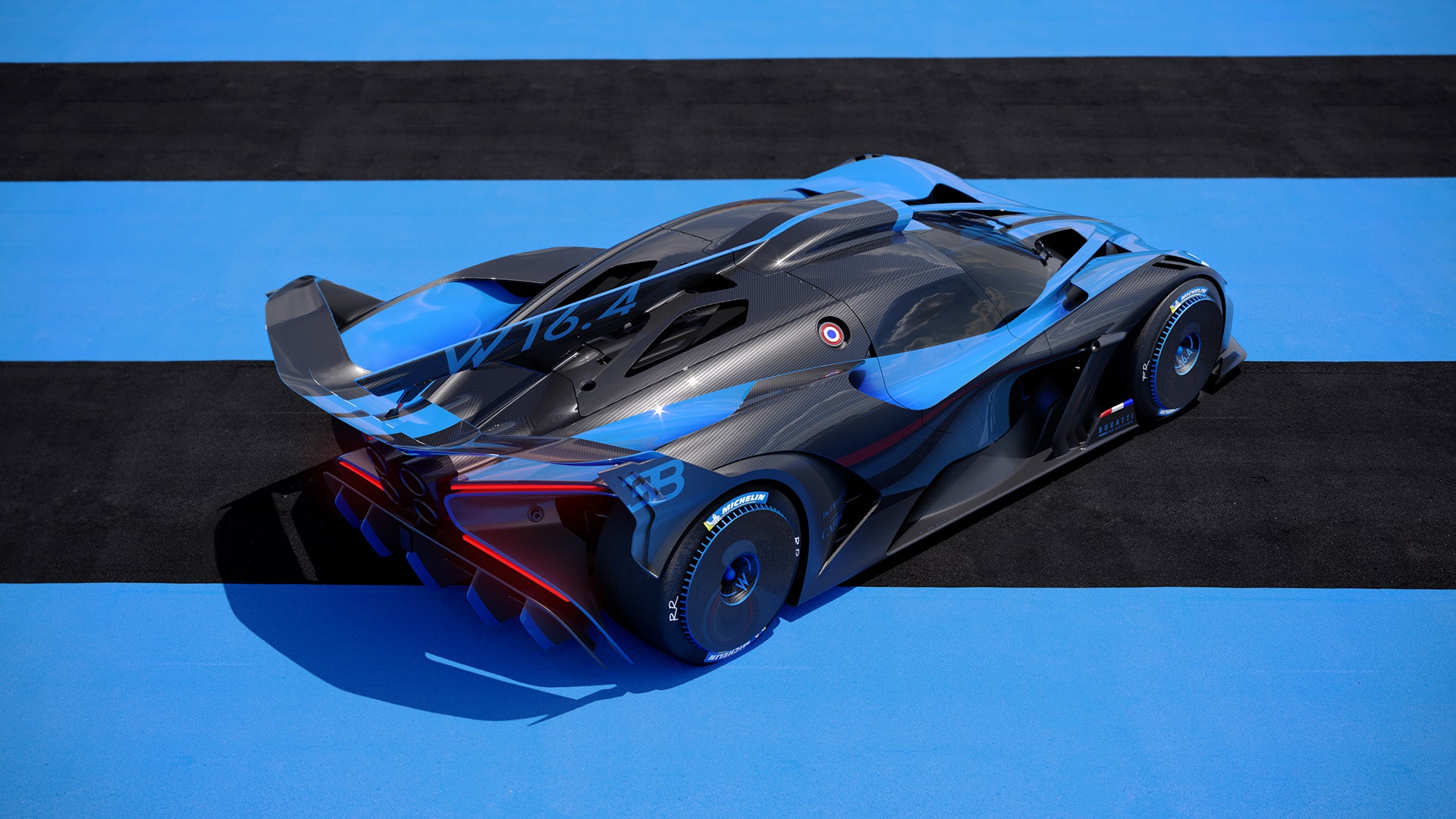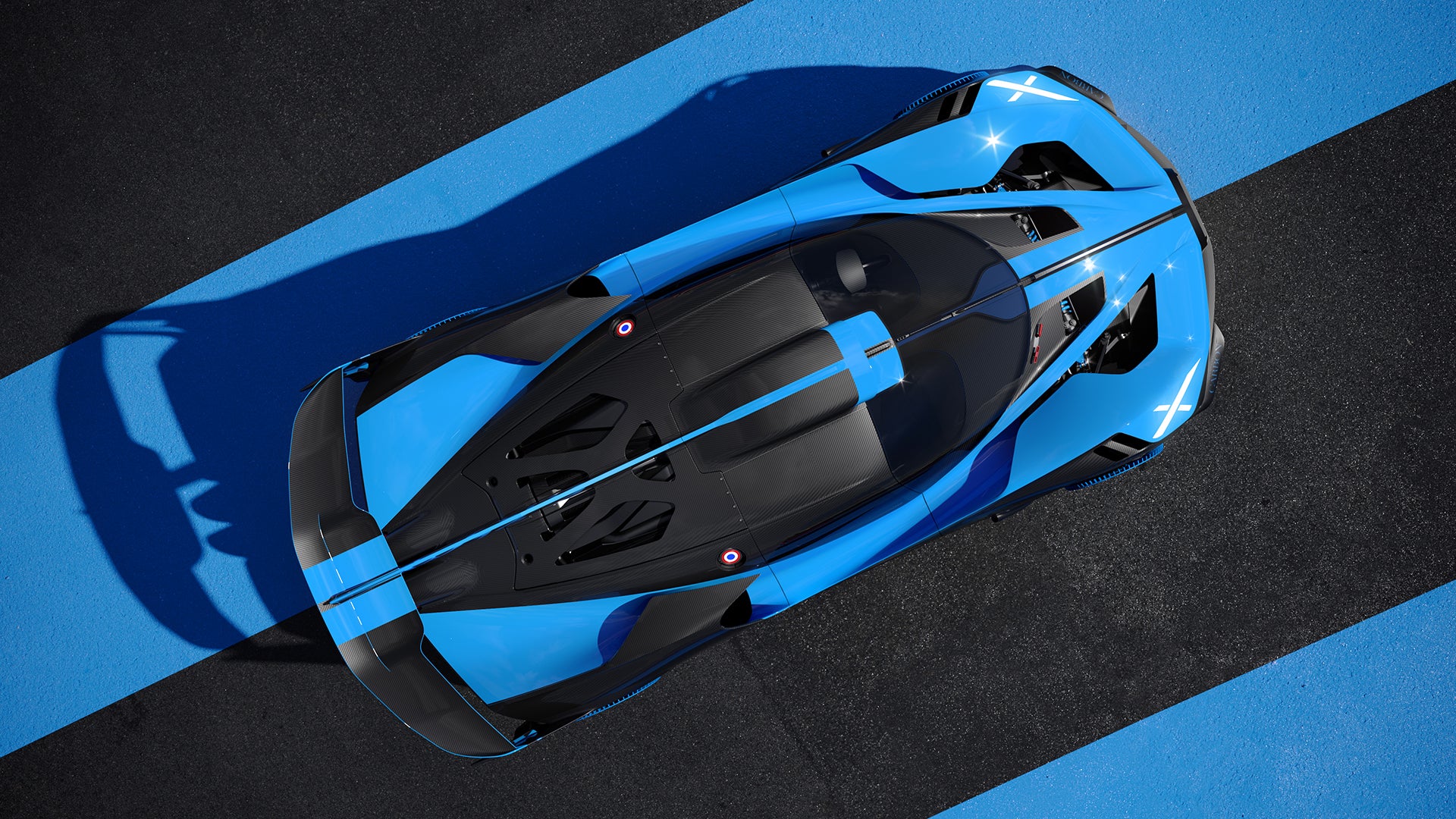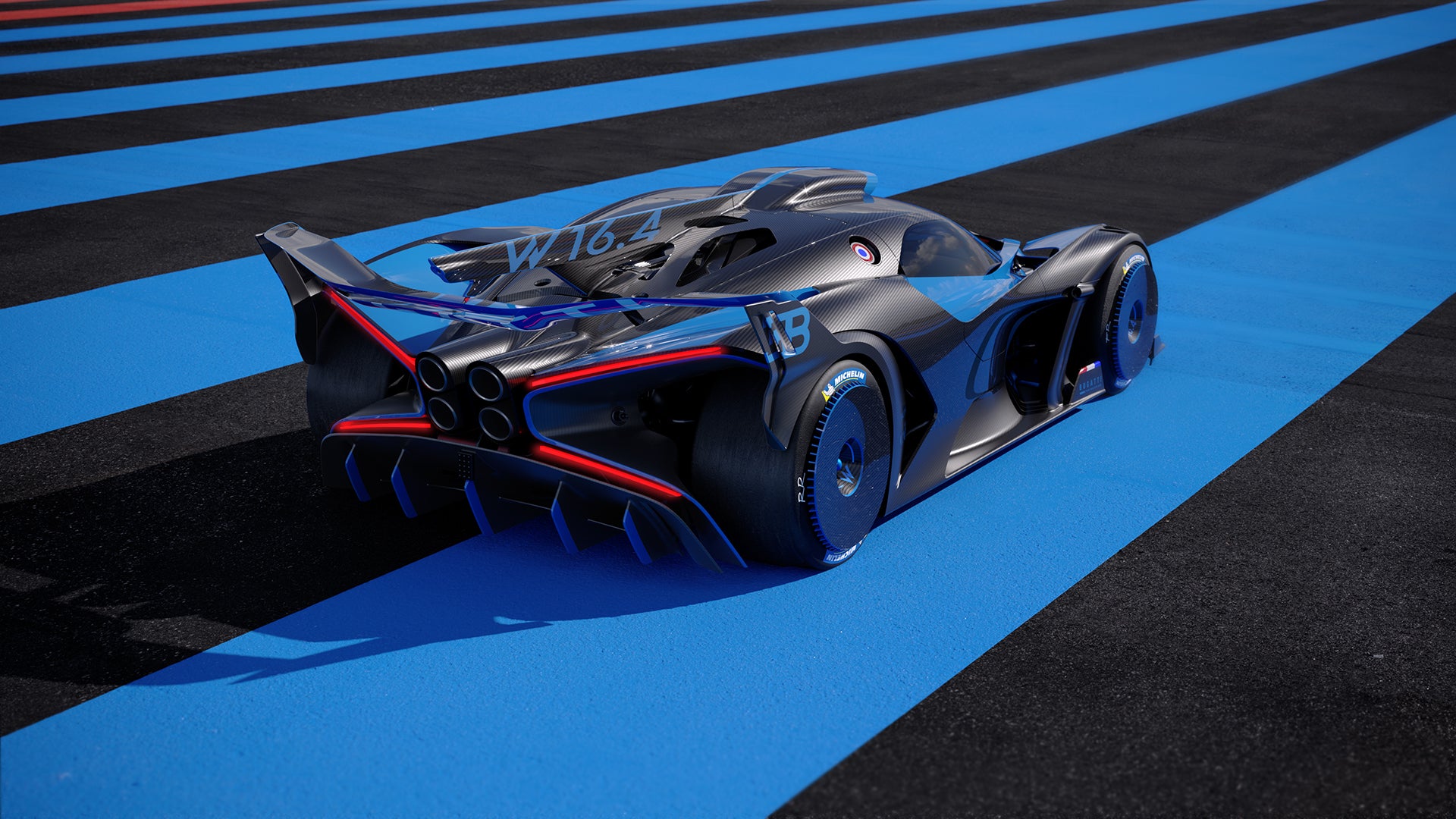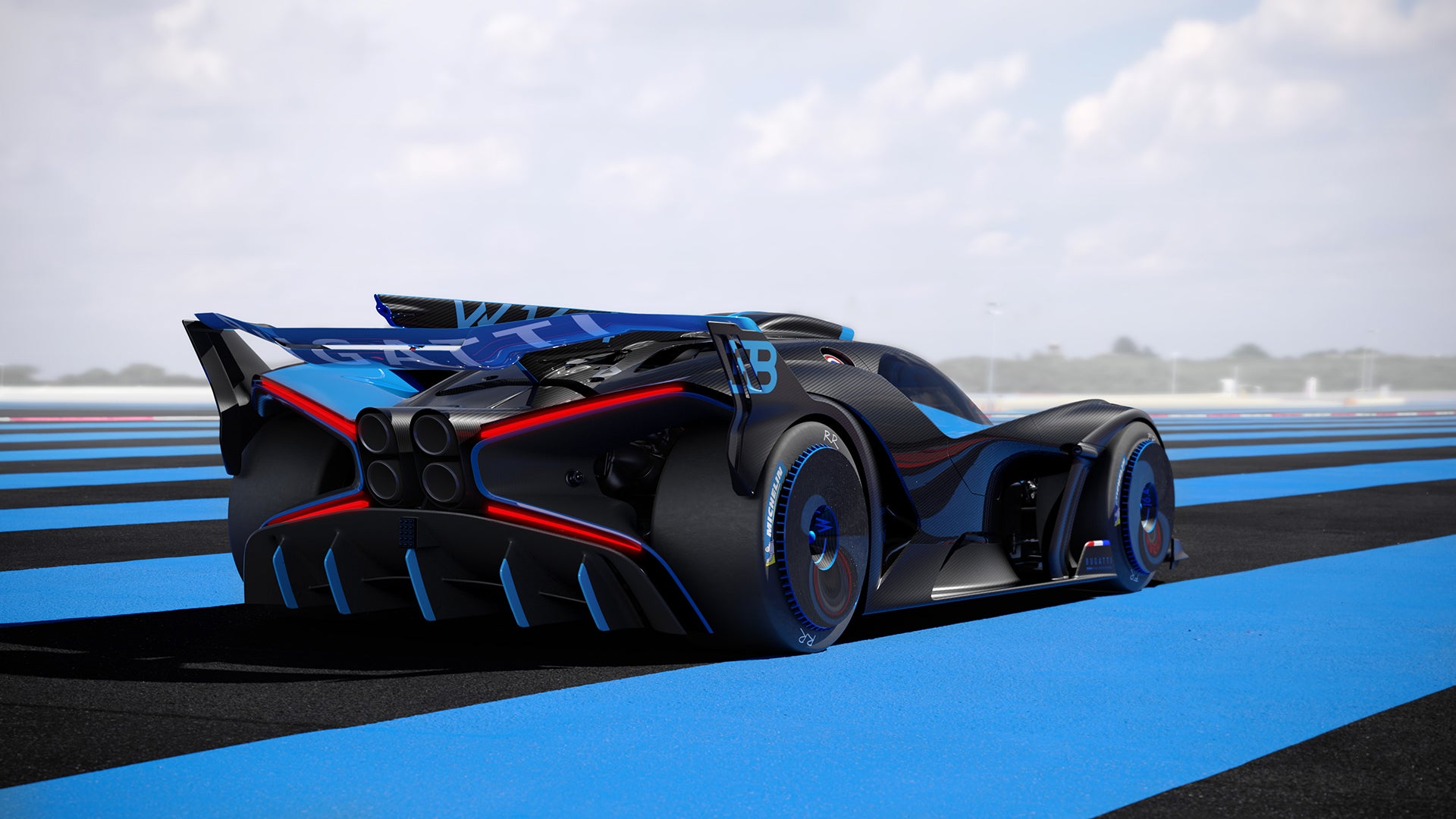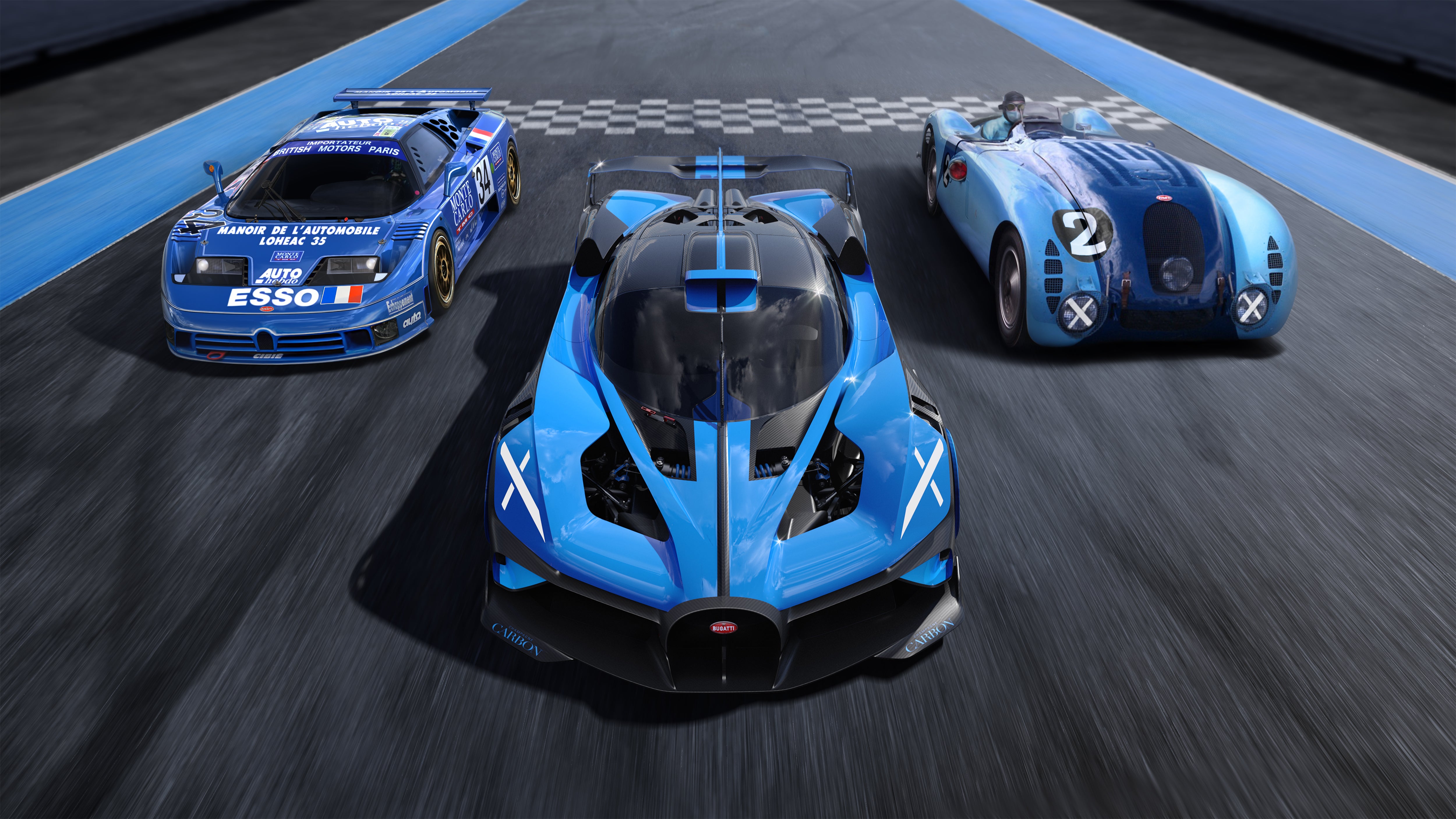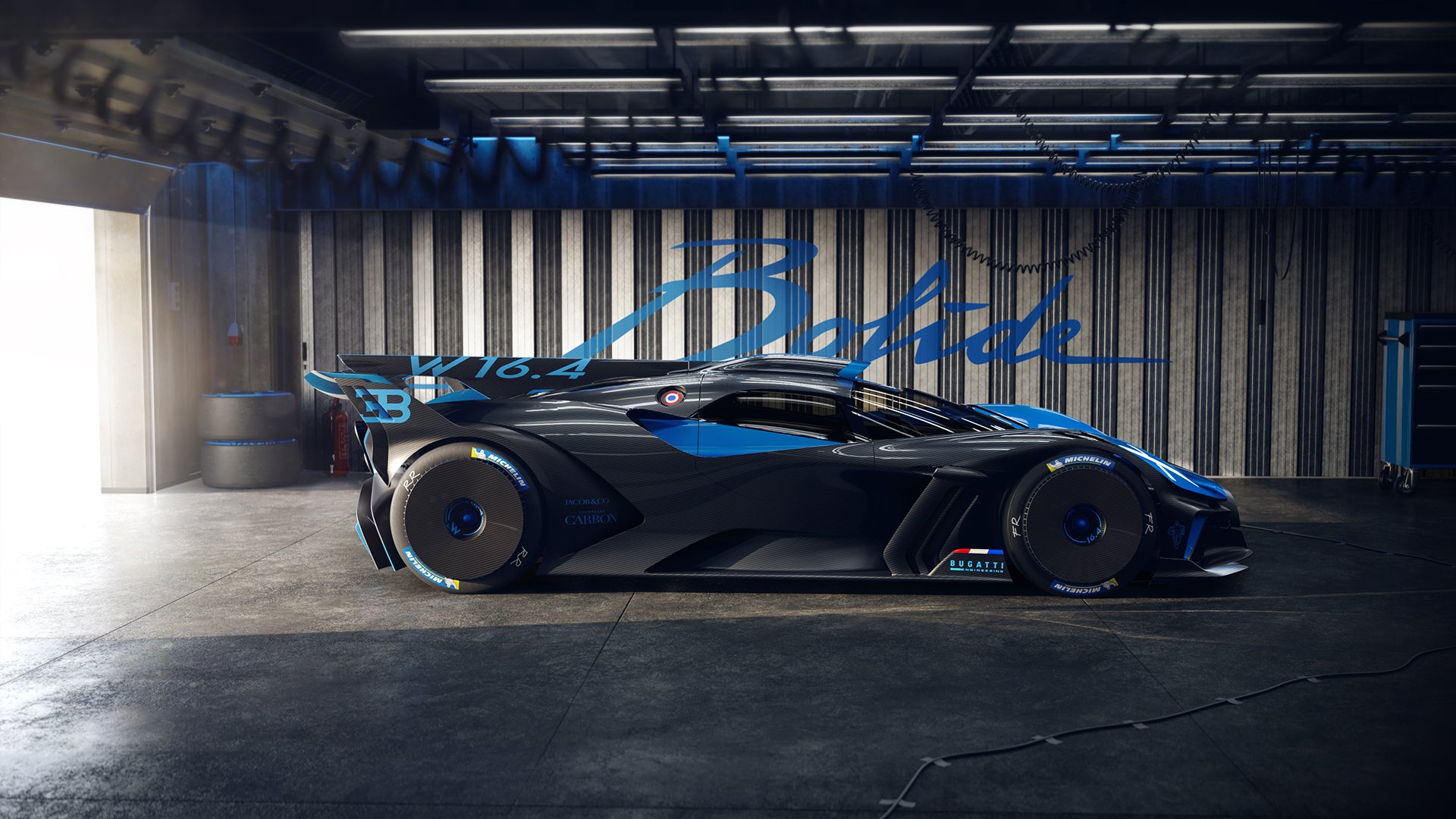Welcome back to the world record conversation, Bugatti—you've been missed. Bugatti unveiled its new Bolide concept car today, which promises to be the most incredible car they've ever built: a lightweight, high-downforce sports car built around Bugatti's signature 8.0-liter quad-turbo W16 engine and all-wheel drive system.
The statistics Bugatti claims for the Bolide alone are mind-blowing. The car is capable of pumping out 1,825 horsepower and 1,364 pound-feet of torque in a car that weighs a relatively light 2,734 pounds. To put that in perspective, that's only about 300 pounds heavier than the current Mazda MX-5—a lot of which probably comes from the Bolide's W16 drivetrain—with roughly ten times the MX-5's horsepower.
To achieve such a light weight with a giant W16 in the middle, Bugatti stripped down the Bolide to the bare necessities. Two seats are the only "luxury," with the rest of the carbon-fiber monocoque's interior being all function. The front end flanged to the monocoque as well as the underbody are also made of high-strength carbon fiber.
The windows are made of a lightweight polycarbonate. Every fastener is made of titanium. Aerospace-grade titanium alloy was 3D printed to make hollow functional components with wall thicknesses of 0.5 millimeters or less. Despite that, Bugatti claims these components are still very strong, with tensile strengths of up to 1,250 newtons per square millimeter. The rear frame, too, used high-strength aviation-grade stainless steel to achieve wall thicknesses of only one millimeter.
The Bolide hypercar was also designed to meet the FIA's safety requirements in as lightweight a package as possible, complete with Hans device-compatible six-point harnesses, tow points, a quick-refueling system with a fuel bladder and an automatic fire suppression system. To better protect the people inside, the monocoque's side floors have integrated carbon-fiber coolant pipes that double as structural reinforcement and side-impact structures.
The seating position is similar to that of a formula car, with the driver laying back and sitting extremely low to keep the center of gravity as close to the ground as possible. To keep the occupants exactly where they're supposed to be, the driver's pedal box and passenger's foot rest are adjustable by up to 5.9 inches.
The engine and transmission were both optimized for higher engine speeds, which was achieved by dethrottling the intake and exhaust systems for a faster response. "Driving the Bolide is like riding on a cannonball," said Bugatti president Stephan Winkelmann.
The W16 features four brand new turbochargers with blades that were developed for more boost pressure and power at higher engine speeds. (You can listen to the engine spin up those turbos in a short clip here.) Bugatti engineers also tweaked the lubrication system and dry sump design to work well under high G-forces, which this car no doubt will see with 340-millimeter-wide tires up front and 400-millimeter-wide tires in the back.
The 1.6-foot auxiliary driveshaft is another thing that enables the Bolide's W16 to run at higher speeds than ever before. It's made of carbon fiber with 3D-printed titanium end fittings, making it capable of withstanding sustained temperatures of 500 degrees Fahrenheit. It's also 3.3 pounds lighter than the regular auxiliary driveshaft, which in turn reduces the rotating mass involved, thus allowing the engine to rev more freely.
Keeping the giant turbocharged W16 engine cool was a priority in its design, which Bugatti claims they achieved using air-to-air intercooling with water pre-cooling. Bugatti claims that the two water coolers sit in front of the Bolide's front axle are more effective in terms of flow than those used in Formula One. The drivetrain also features three air-cooled oil coolers that keep the engine, transmission and differential operating at the optimal temperatures.
The brakes also need to keep cool to be able to stop such a high-speed car, which is why they feature turbofan radial compressors made of a brand-new carbon-titanium material. These, too, are also absurdly light, with calipers that weigh just 5.3 pounds each.
Aerodynamics were another crucial part of the Bolide's design, which achieves 3,968 lbs at the rear wing and 1,763 pounds at the front wing at a speed of 199 mph. Titanium elements that weigh 1.3 pounds in the front and 0.7 pounds in the rear were designed to withstand the forces acting on the Bolide's front and rear wings. The unique morphing outer skin of the roof-mounted intake scoop is smooth at low speeds but reshapes into numerous bubbles when the Bolide is driven fast, which reduces drag by 10%, reduces lift by 17% and optimizes airflow to the rear wing.
Even the Bolide's aerospace-grade stainless steel control arms are designed as wing profiles. For the first time, Bugatti channeled air through through the inside of the front wheels and around the monocoque for more downforce as well.
The car also has a racing-style pushrod suspension with horizontal dampers. The dampers weigh only 3.5 ounces each, are made of thin-walled titanium, and can handle buckling loads of up to 3.5 tons. The dampers are also optimized for better airflow, with their oil reservoirs inside the dampers themselves.
Other features include extra-light centerlock wheels (16.3 pounds in front and 18.5 pounds in the rear), a motorsport-style display and a four-post air jack system for quick tire changes.
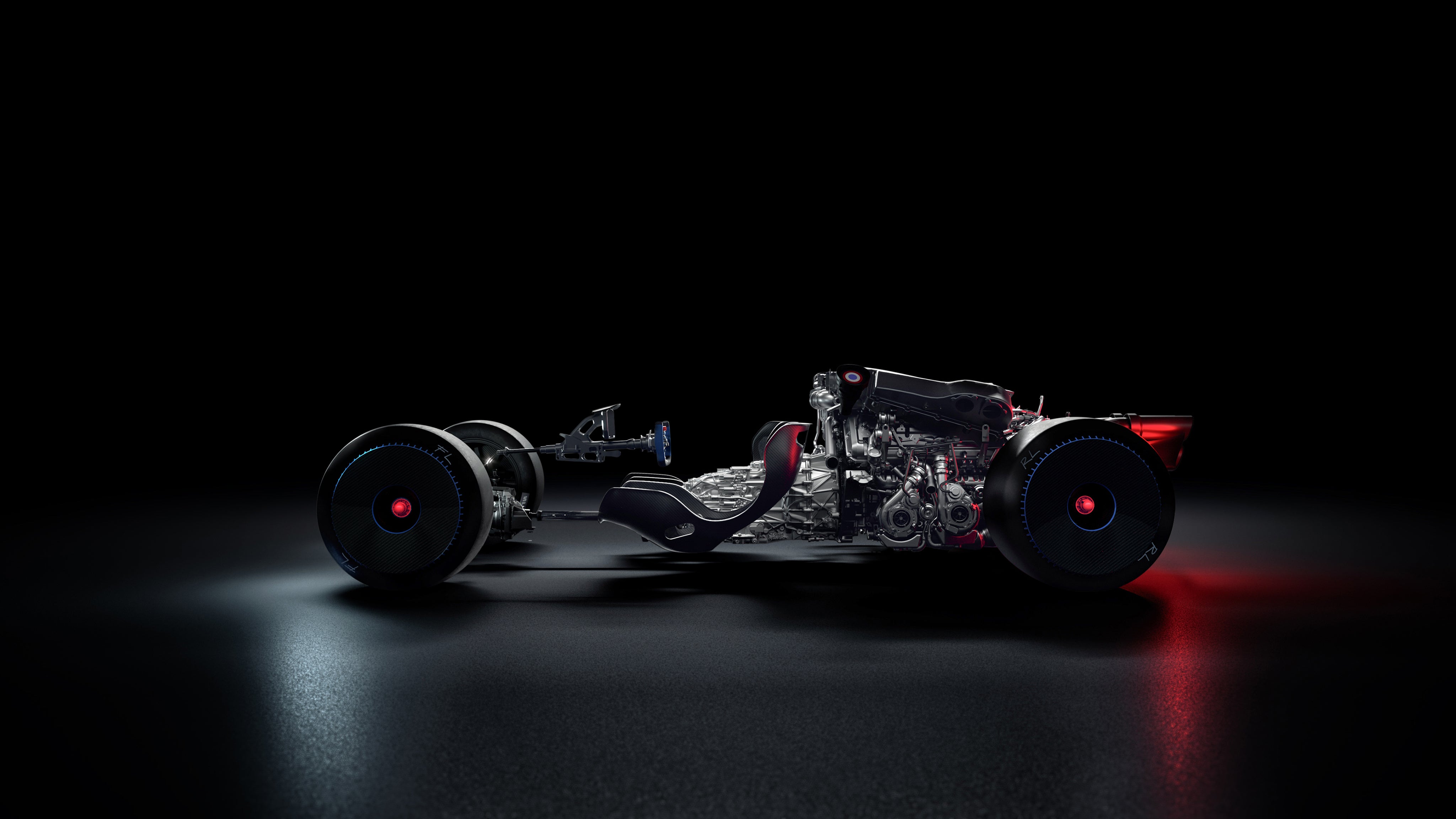
Bugatti says its most incredible car to date takes just 5:23.1 minutes to lap the Nürburgring Nordschleife when they've run it through simulations. That puts it just seconds behind the all-time record of 5:19.55 set by the Porsche 919 Hybrid Evo, which was a full-on Le Mans prototype modified for pure speed.
Speaking of Le Mans, Bugatti says the Bolide will do a 3:07.1-minute lap there based on their simulations of its performance, which would be seven seconds faster than any of the Le Mans prototypes have lapped it. If these times ever get out of the hypothetical discussion and into real-world track time, we're going to need to see uncut lap footage on those as proof and also because OH MY GOODNESS, HOLY CRAP.
Let's talk about another record it could potentially upset: land speed. Bugatti themselves may have retired from the land-speed record game, but that doesn't stop an owner from having a bit of SSC-trolling fun. Bugatti says the Bolide's top speed is "well over" 310 mph, but doesn't define exactly what "well over" means here. Just run the thing, man. Build more and sell it.
Incredibly, Bugatti engineer Franz Götzke said that the Bolide concept came together in just eight months. Bugatti says they are not sure whether the Bolide will enter production. Winkelmann says that the Bolide concept is all about answering the what-ifs of Bugatti focusing its engineering prowess on a track beast, but the best way to prove a what-if is to build it. Sell it. Release it into the general public's and racing drivers' hands. Go forth, and prove these simulation-based claims.
Got a tip? Send us a note: [email protected]

